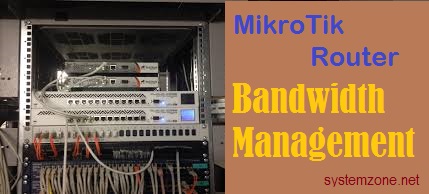Maximizing Bandwidth Efficiency With MikroTik Router Configuration
Managing bandwidth can be a daunting task, especially if you are not well-versed in networking technologies. However, with the right tools and information, you can easily limit the bandwidth of a MikroTik router to improve network performance and optimize internet speeds. In this article, we will explain the different ways to limit bandwidth on MikroTik to help ensure that your internet connection is running smoothly and efficiently.

Understanding Bandwidth Limitation
Before we delve into the various ways to limit bandwidth on MikroTik, let's first understand what bandwidth limitation is. Bandwidth limitation refers to the practice of setting a cap or limit on the amount of data that can be transmitted over a network in a given period. The process involves controlling the flow of data traffic, and it can be applied to both upload and download data streams.
Ways to Limit Bandwidth on MikroTik
There are several ways of limiting bandwidth on MikroTik. These include:
1. Using the Simple Queue
The Simple Queue is one of the most straightforward methods of limiting bandwidth on MikroTik routers. It allows you to prioritize traffic based on IP address, protocol, port, and other criteria. You can limit the bandwidth with the 'Rate limit' option, which is specified in bits per second (bps).
To create a simple queue on MikroTik, follow these steps:
- Log in to your MikroTik router via Winbox or web interface
- Go to the Queues tab and click the + button to create a new queue.
- A window will appear where you can set the queue parameters. Give your queue a name and select the target IP address or subnet you want to limit.
- Set the default-rate and max-limit values according to your bandwidth requirements.
- You can also specify the priority of your traffic by setting the priority value.
- Click OK to save your settings.
2. Using PCQ
PCQ (Per Connection Queue) is a more advanced method of bandwidth limitation, preferred by network administrators. It allows you to allocate bandwidth based on the number of connections from each IP address, ensuring equal distribution of bandwidth among users. With PCQ, you can set a maximum connection rate per user, which is useful in scenarios where many users are connecting to the internet using a single IP address.
To create a PCQ queue on MikroTik, follow these steps:
- Log in to your MikroTik router via Winbox or web interface
- Go to the Queues tab and click the + button to create a new queue.
- In the window that appears, select 'PCQ Simple' as the queue type.
- Set the target IP address or subnet and specify the maximum connection rate per user.
- Set the Rate Limit value to control the overall bandwidth used by the queue.
- Click OK to save your settings.
3. Using Burst
Burst is another effective method of bandwidth limitation on MikroTik, especially when dealing with traffic that has variable bandwidth requirements. With Burst, you can specify a maximum amount of data that can be transmitted in a given period. This helps to avoid situations where some users hog all the available bandwidth and leave little room for other users.
To configure Burst on MikroTik, follow these steps:
- Log in to your MikroTik router via Winbox or web interface
- Go to the Queues tab, select the desired queue, and click on the 'Extra' button.
- In the window that appears, find the 'Burst Threshold' and 'Burst Time' settings.
- Specify the maximum amount of data that can be transmitted during the burst period and the duration of the burst.
- Click OK to save your settings.
4. Using Firewall Mangle Rules
Firewall Mangle Rules is another method of limiting bandwidth on MikroTik, preferred by advanced users. It allows you to classify and mark traffic based on various criteria, including source and destination IP addresses, protocol, port, and so on.
To create a Firewall Mangle Rule on MikroTik, follow these steps:
- Log in to your MikroTik router via Winbox or web interface
- Go to the IP tab and select Firewall
- Click on the 'mangle' tab and then the plus (+) button to create a new rule.
- In the window that appears, specify the source or destination IP address, protocol, port, and other criteria to classify the traffic.
- Set the 'action' field to 'mark-connection' and specify the 'new-connection-mark' value.
- Set the 'rate' limit value to control the bandwidth used by the marked connection.
- Click OK to save your settings.
Conclusion
Limiting bandwidth on MikroTik can be a complex process, but with the right tools and information, you can easily optimize your internet speeds and improve network performance. In this article, we have outlined the different ways of limiting bandwidth on MikroTik, including using Simple Queue, PCQ, Burst, and Firewall Mangle Rules. Depending on your network requirements, you can choose the method that best suits your needs and ensures that your internet connection is running smoothly and efficiently.



Post a Comment for "Maximizing Bandwidth Efficiency With MikroTik Router Configuration"